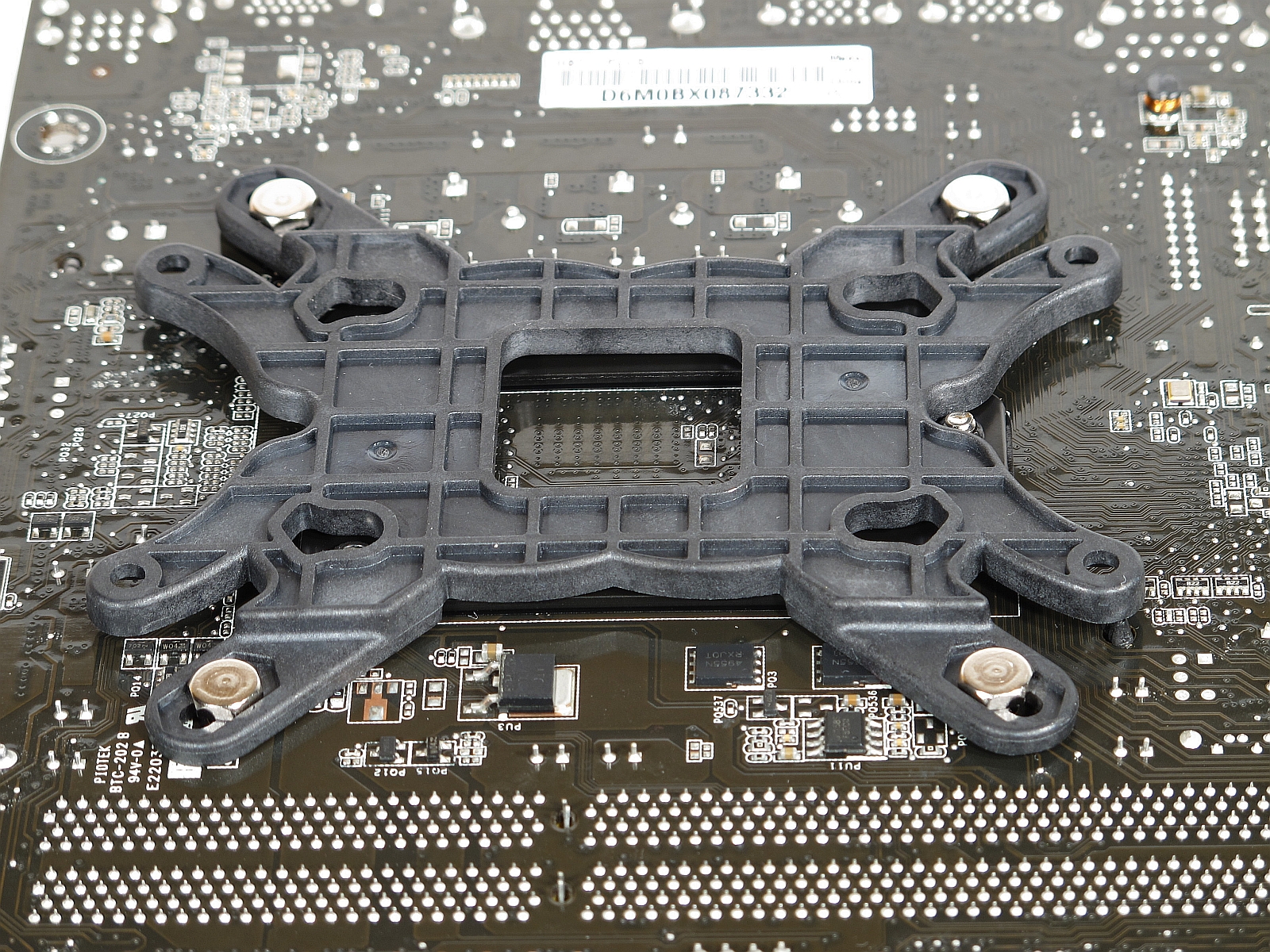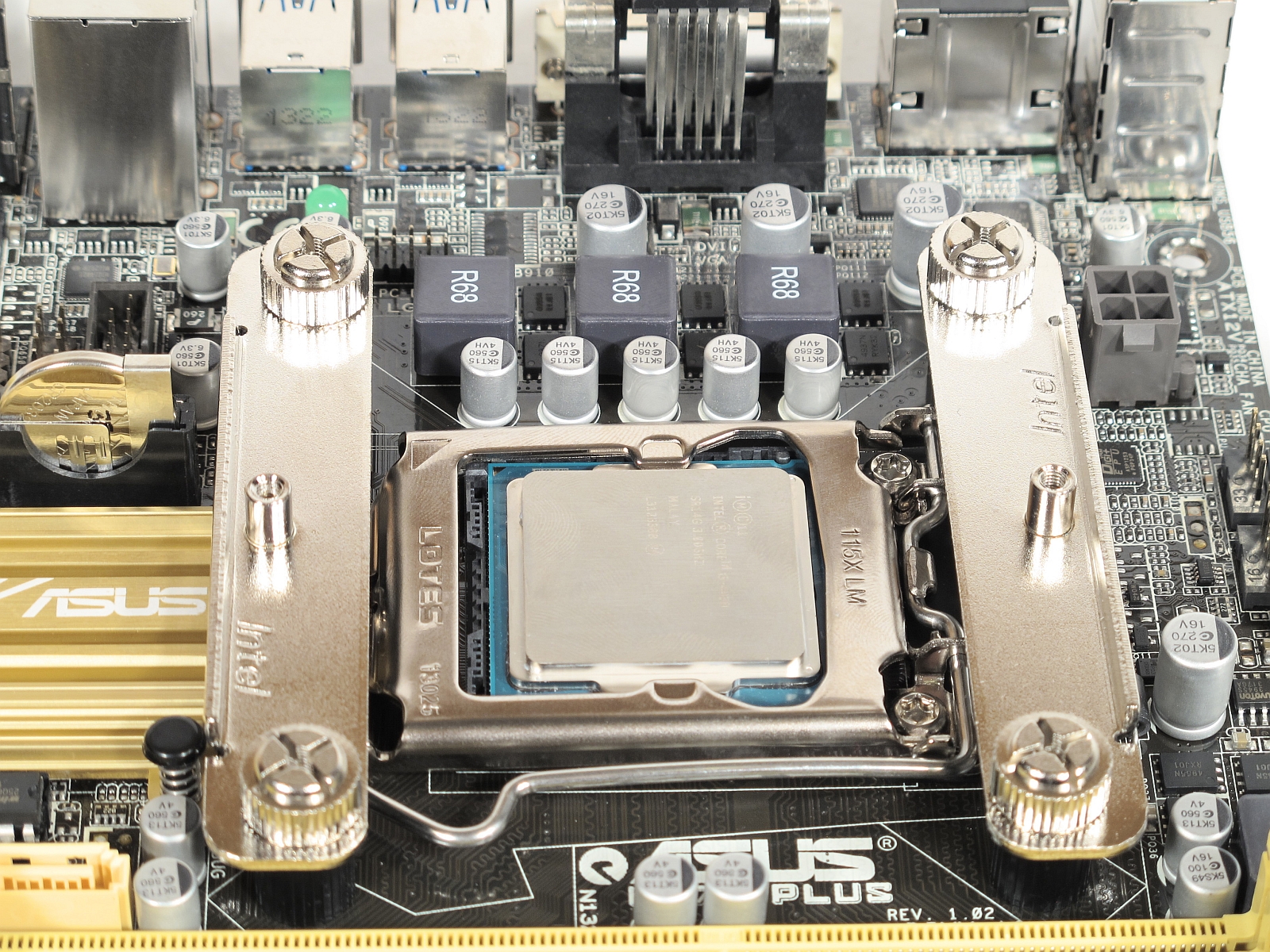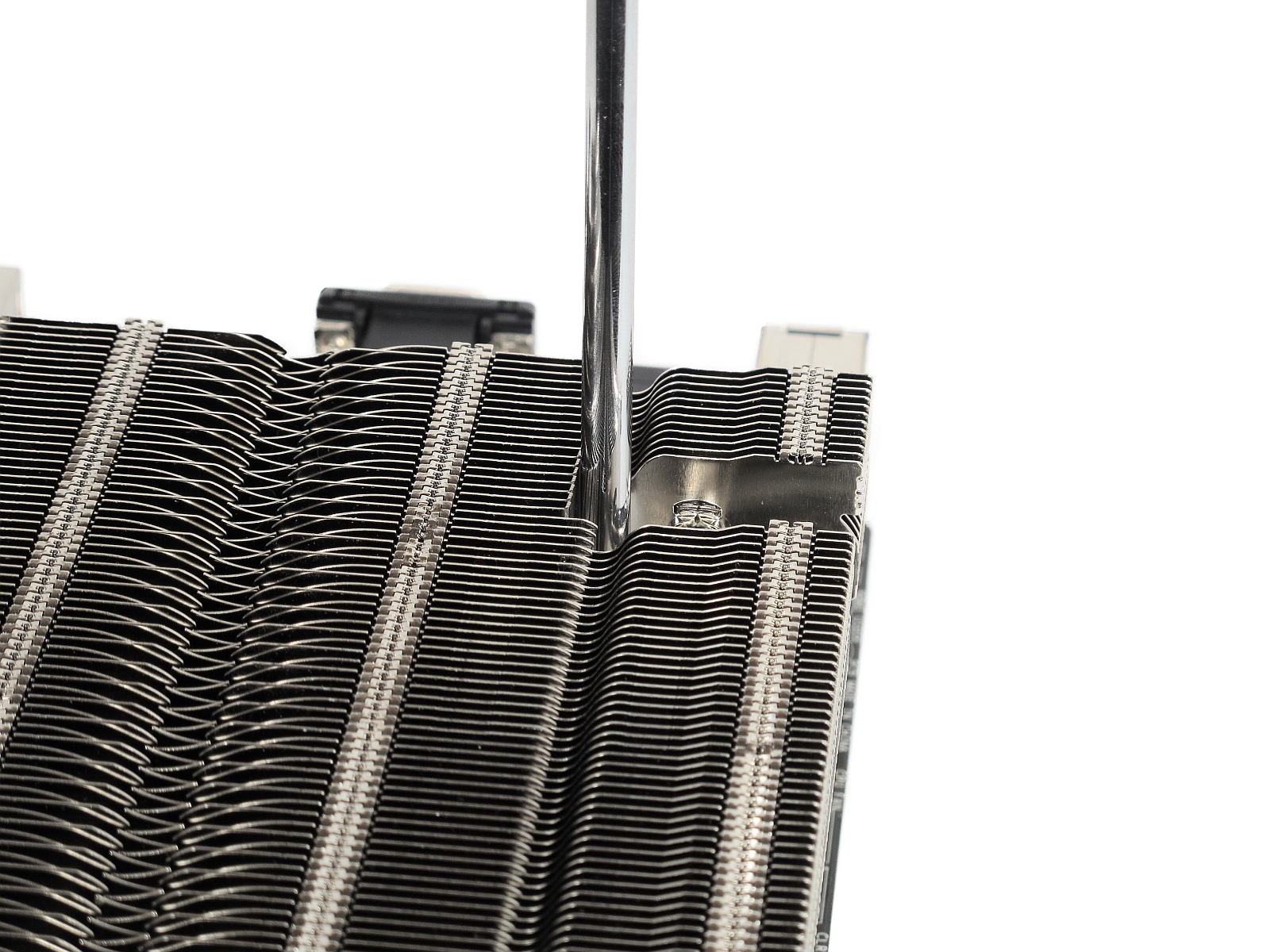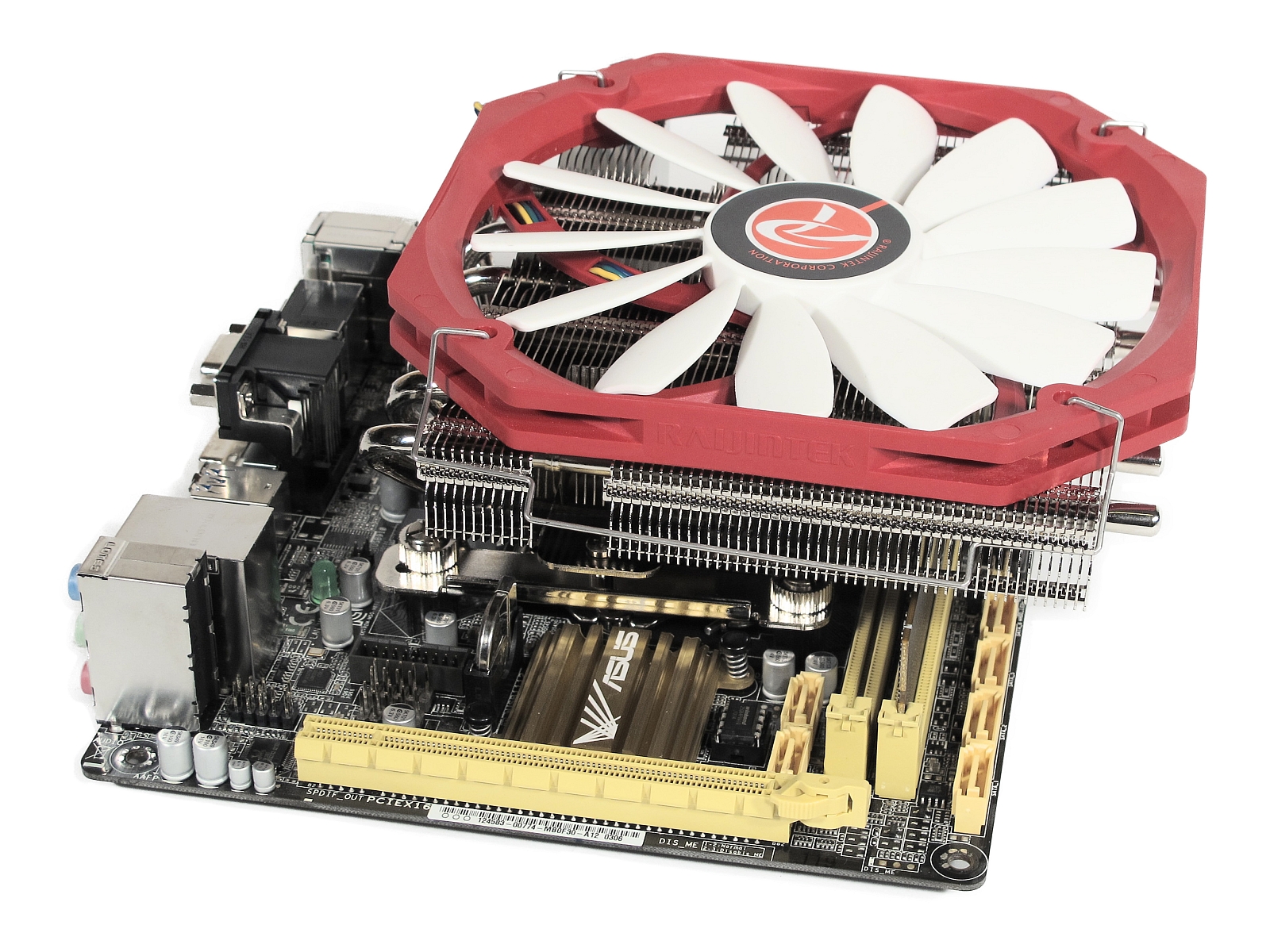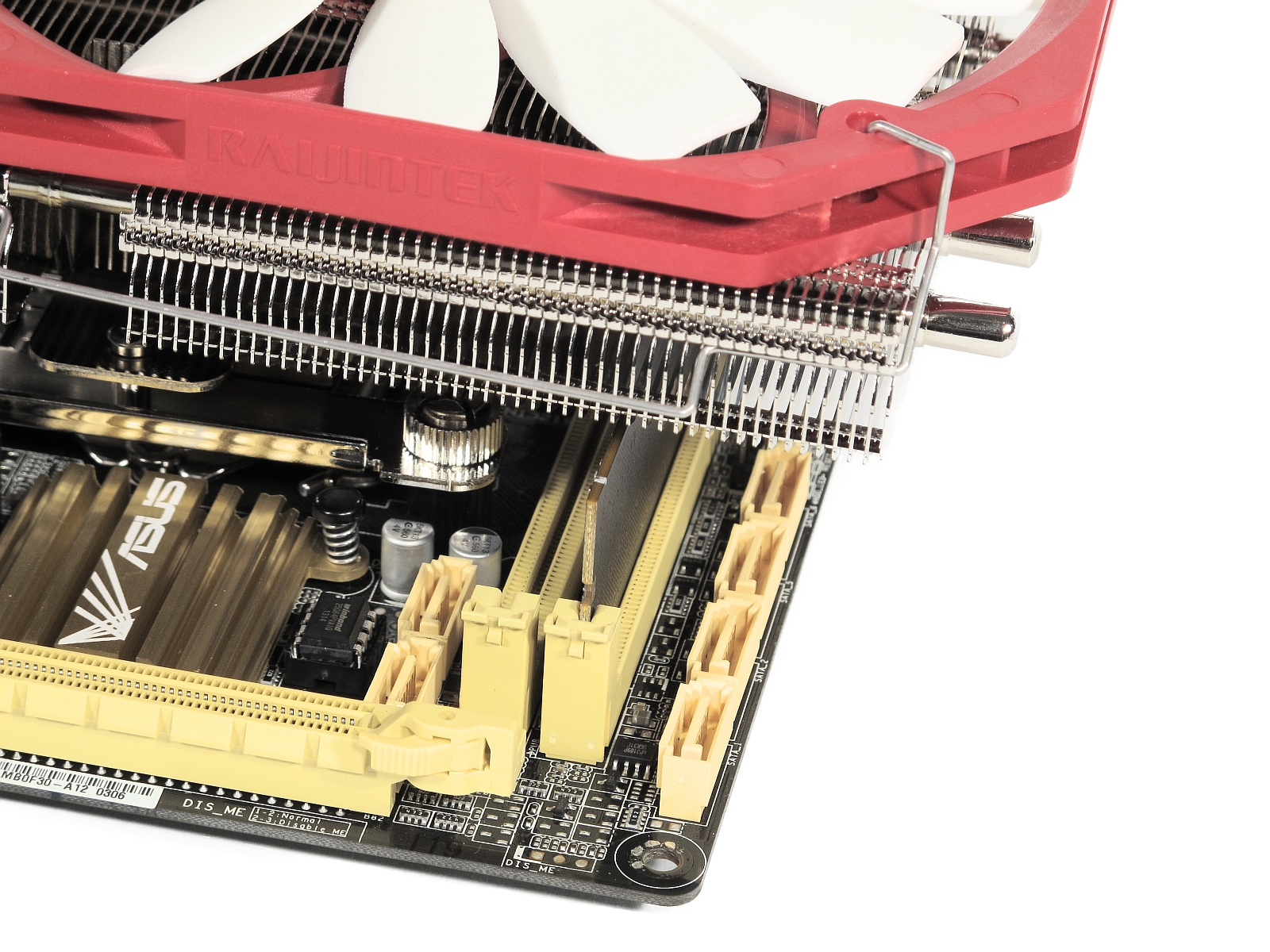Raijintek Pallas CPU Cooler Review
Raijintek's Pallas is a new and inexpensive slim CPU Cooler aimed at the Mini-ITX segment; intended to compete with Thermalright’s top-of-the-line AXP-200.
Installation
The Pallas’ installation mechanism is a carbon copy of the Ereboss’. It’s based on a backplate made of hard and sturdy plastic universally applicable to all processor interfaces. The advantage of this is that there are no parts isolating the backplate from the motherboard. However, this can also create problems on some boards due to the unconventional shape (see our compatibility notes below).
Screws with hexagonal heads are pushed through holes in the backplate and around the motherboard's CPU interface. The screw heads sit in fitting indentations in the backplate. On the front, plastic spacers are screwed on.
Next, the included retention bars for the cooler, which are different for Intel and AMD systems, are fastened in place with thumb screws.
Finally, a crossbar is fastened to the cooler and screwed to the retention bars. The screws are easy to reach through holes in the cooler.
The crossbar has a pair of protrusions that snap into place in two holes in the cooler’s baseplate. This keeps the cooler from sliding.
Notes On Compatibility
Similar to the Ereboss, installing Raijintek's Pallas in 90 degree steps is only possible on Intel systems. Of course, this typically isn't an important distinction for coolers that blow down onto your motherboard, though.
The backplate can cause problems with ITX motherboards. If your board of choice has surface-mount components behind the CPU interface, in a worst-case scenario, the Pallas could crush them. You'll need to check for compatibility before trying to seat the backplate. This usually isn’t a problem for the larger form-factor motherboards, but, unfortunately, it’s a common issue for smaller ones.
Get Tom's Hardware's best news and in-depth reviews, straight to your inbox.
Raijintek's Pallas fit loosely on an Asus H87I-Plus motherboard. There were no problems with it on an ASRock B75M-ITX, though. It should be noted that the Asus board does diverge quite a bit from Intel’s reference design.
Raijintek could avoid these problems in many cases if it had the backplate touch the motherboard in just a few places, as opposed to it lying flat. This could be achieved by using additional spacers between the backplate and motherboard. Thermalright uses that sort of configuration for many of its CPU coolers. In talking to Raijintek, the company promises to examine this possibility and upgrade the Pallas if it works out.
Memory modules without heat spreaders and those with smaller ones that don’t extend above the upper edge of the PCB by more than a millimeter can be placed under the Raijintek Pallas.
